1.Identification
1.1 GHS Product identifier
| Product name | Hydrazine |
|---|
1.2 Other means of identification
| Product number | - |
|---|---|
| Other names | Nitrogen hydride |
1.3 Recommended use of the chemical and restrictions on use
| Identified uses | For industry use only. Volatile organic compounds |
|---|---|
| Uses advised against | no data available |
1.4 Supplier's details
1.5 Emergency phone number
| Emergency phone number | - |
|---|---|
| Service hours | Monday to Friday, 9am-5pm (Standard time zone: UTC/GMT +8 hours). |
2.Hazard identification
2.1 Classification of the substance or mixture
Flammable liquids, Category 3
Acute toxicity - Oral, Category 3
Acute toxicity - Dermal, Category 3
Skin corrosion, Category 1B
Skin sensitization, Category 1
Acute toxicity - Inhalation, Category 3
Carcinogenicity, Category 1B
Hazardous to the aquatic environment, short-term (Acute) - Category Acute 1
Hazardous to the aquatic environment, long-term (Chronic) - Category Chronic 1
2.2 GHS label elements, including precautionary statements
| Pictogram(s) | 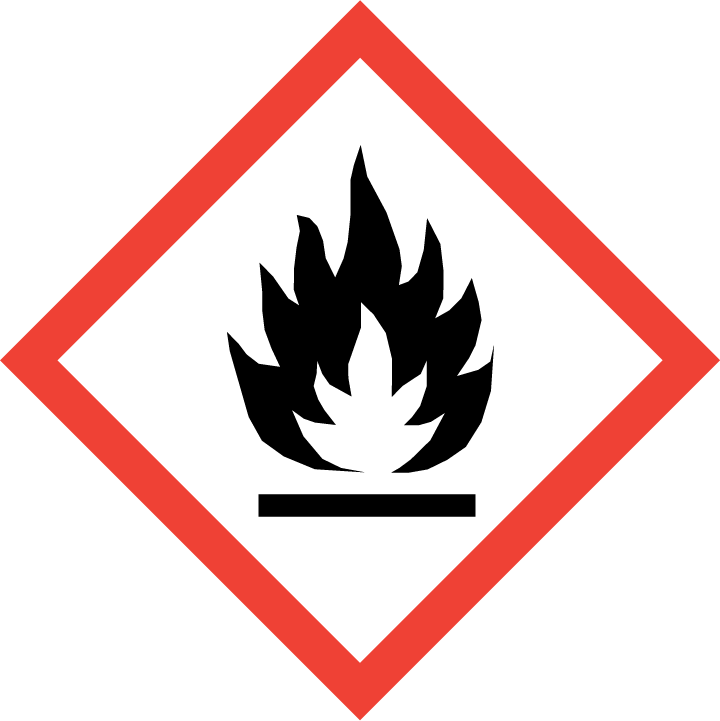 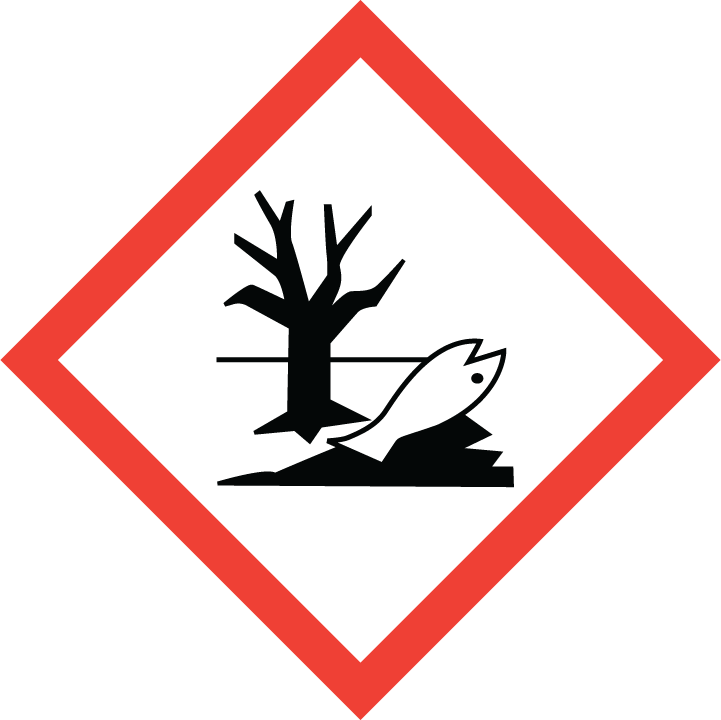 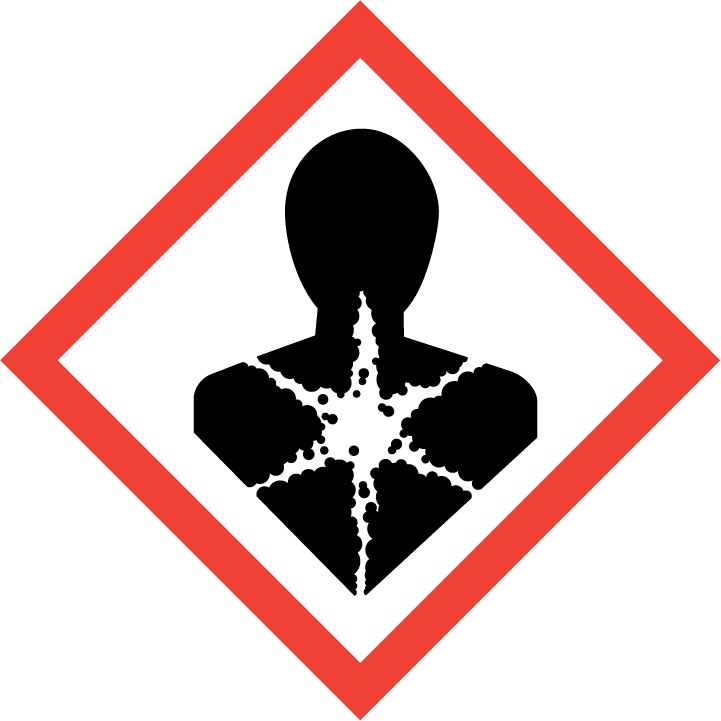 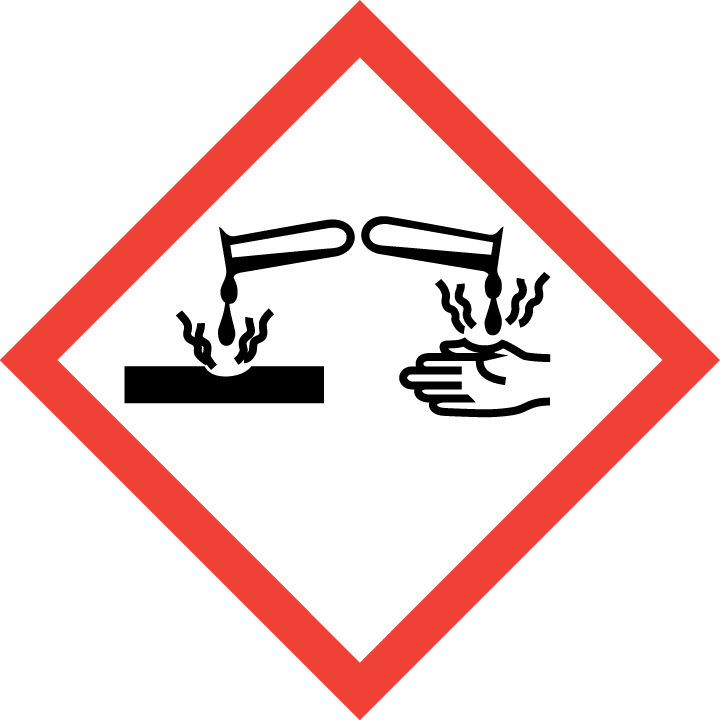 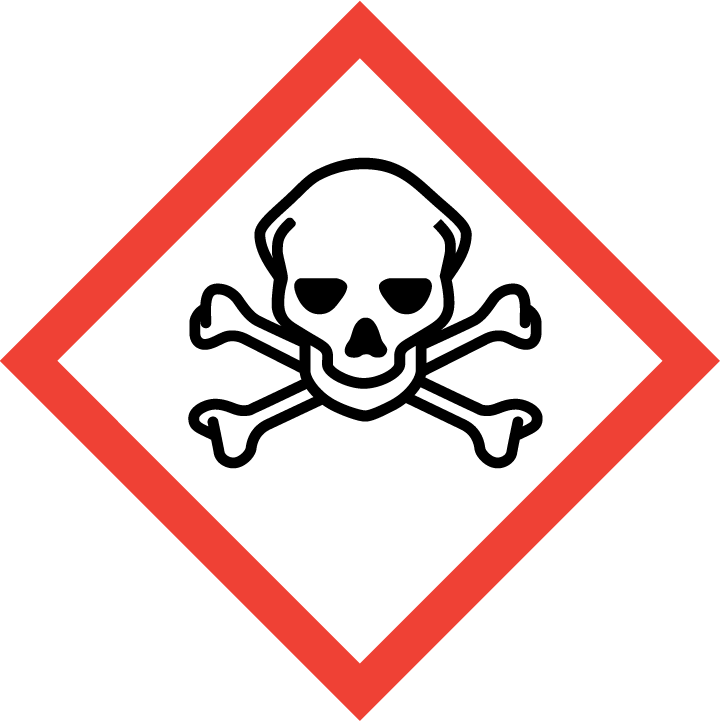 |
|---|---|
| Signal word | Danger |
| Hazard statement(s) | H226 Flammable liquid and vapour H301 Toxic if swallowed H311 Toxic in contact with skin H314 Causes severe skin burns and eye damage H317 May cause an allergic skin reaction H331 Toxic if inhaled H350 May cause cancer H410 Very toxic to aquatic life with long lasting effects |
| Precautionary statement(s) | |
| Prevention | P210 Keep away from heat, hot surfaces, sparks, open flames and other ignition sources. No smoking. P233 Keep container tightly closed. P240 Ground and bond container and receiving equipment. P241 Use explosion-proof [electrical/ventilating/lighting/...] equipment. P242 Use non-sparking tools. P243 Take action to prevent static discharges. P280 Wear protective gloves/protective clothing/eye protection/face protection. P264 Wash ... thoroughly after handling. P270 Do not eat, drink or smoke when using this product. P260 Do not breathe dust/fume/gas/mist/vapours/spray. P261 Avoid breathing dust/fume/gas/mist/vapours/spray. P272 Contaminated work clothing should not be allowed out of the workplace. P271 Use only outdoors or in a well-ventilated area. P201 Obtain special instructions before use. P202 Do not handle until all safety precautions have been read and understood. P273 Avoid release to the environment. |
| Response | P303+P361+P353 IF ON SKIN (or hair): Take off immediately all contaminated clothing. Rinse skin with water [or shower]. P370+P378 In case of fire: Use ... to extinguish. P301+P310 IF SWALLOWED: Immediately call a POISON CENTER/doctor/… P321 Specific treatment (see ... on this label). P330 Rinse mouth. P302+P352 IF ON SKIN: Wash with plenty of water/... P312 Call a POISON CENTER/doctor/…if you feel unwell. P361+P364 Take off immediately all contaminated clothing and wash it before reuse. P301+P330+P331 IF SWALLOWED: Rinse mouth. Do NOT induce vomiting. P363 Wash contaminated clothing before reuse. P304+P340 IF INHALED: Remove person to fresh air and keep comfortable for breathing. P310 Immediately call a POISON CENTER/doctor/… P305+P351+P338 IF IN EYES: Rinse cautiously with water for several minutes. Remove contact lenses, if present and easy to do. Continue rinsing. P333+P313 If skin irritation or rash occurs: Get medical advice/attention. P362+P364 Take off contaminated clothing and wash it before reuse. P311 Call a POISON CENTER/doctor/… P308+P313 IF exposed or concerned: Get medical advice/ attention. P391 Collect spillage. |
| Storage | P403+P235 Store in a well-ventilated place. Keep cool. P405 Store locked up. P403+P233 Store in a well-ventilated place. Keep container tightly closed. |
| Disposal | P501 Dispose of contents/container to ... |
2.3 Other hazards which do not result in classification
none
3.Composition/information on ingredients
3.1 Substances
| Chemical name | Common names and synonyms | CAS number | EC number | Concentration |
|---|---|---|---|---|
| Hydrazine | Hydrazine | 302-01-2 | none | 100% |
4.First-aid measures
4.1 Description of necessary first-aid measures
General advice
Consult a physician. Show this safety data sheet to the doctor in attendance.
If inhaled
Fresh air, rest. Half-upright position. Refer immediately for medical attention.
In case of skin contact
First rinse with plenty of water for at least 15 minutes, then remove contaminated clothes and rinse again. See Notes. Refer immediately for medical attention.
In case of eye contact
Rinse with plenty of water (remove contact lenses if easily possible). Refer immediately for medical attention.
If swallowed
Rinse mouth. Give nothing to drink. Do NOT induce vomiting. Refer immediately for medical attention.
4.2 Most important symptoms/effects, acute and delayed
Target organs affected include central nervous system; respiratory system; skin and eyes. Chronic exposure in humans may cause pneumonia, liver and kidney damage. Liver damage may be more severe than kidney damage. It is a suspected human carcinogen. (EPA, 1998)
Excerpt from ERG Guide 132 [Flammable Liquids - Corrosive]: May cause toxic effects if inhaled or ingested/swallowed. Contact with substance may cause severe burns to skin and eyes. Fire will produce irritating, corrosive and/or toxic gases. Vapors may cause dizziness or suffocation. Runoff from fire control or dilution water may cause pollution. (ERG, 2016)
Excerpt from ERG Guide 152 [Substances - Toxic (Combustible)]: Highly toxic, may be fatal if inhaled, swallowed or absorbed through skin. Contact with molten substance may cause severe burns to skin and eyes. Avoid any skin contact. Effects of contact or inhalation may be delayed. Fire may produce irritating, corrosive and/or toxic gases. Runoff from fire control or dilution water may be corrosive and/or toxic and cause pollution. (ERG, 2016)
4.3 Indication of immediate medical attention and special treatment needed, if necessary
Specific treatment for exposure consists of thorough washing of all exposed skin areas with soap and water, copious irrigation of the eyes, and prompt removal of the patient from the source of exposure. /Hydrazines/
5.Fire-fighting measures
5.1 Extinguishing media
Suitable extinguishing media
If material on fire or involved in fire: Extinguish fire using agent suitable for type of surrounding fire. (Material itself does not burn or burns with difficulty.) Keep run-off water out of sewers and water sources. /Hydrazine, aqueous solution/
5.2 Specific hazards arising from the chemical
It is a flammable/combustible material and may be ignited by heat, sparks, or flames. Vapor may travel to a source of ignition and flash back. Container may explode in heat of fire. Vapor explosion and poison hazard indoors, outdoors, or in sewers. Runoff to sewer may create fire or explosion hazard. Vapors form explosive mixtures with air. May continue to burn in the absence of air. Decomposition gives off toxic nitrogen compound fumes. Can catch fire when in contact with porous materials such as wood, asbestos, cloth, earth, and rusty metals. Incompatible with oxidizers, hydrogen peroxide, nitric acid, metal oxides, and strong acids. Hazardous polymerization may not occur. (EPA, 1998)
Excerpt from ERG Guide 132 [Flammable Liquids - Corrosive]: Flammable/combustible material. May be ignited by heat, sparks or flames. Vapors may form explosive mixtures with air. Vapors may travel to source of ignition and flash back. Most vapors are heavier than air. They will spread along ground and collect in low or confined areas (sewers, basements, tanks). Vapor explosion hazard indoors, outdoors or in sewers. Those substances designated with a (P) may polymerize explosively when heated or involved in a fire. Runoff to sewer may create fire or explosion hazard. Containers may explode when heated. Many liquids are lighter than water. (ERG, 2016)
Excerpt from ERG Guide 152 [Substances - Toxic (Combustible)]: Combustible material: may burn but does not ignite readily. Containers may explode when heated. Runoff may pollute waterways. Substance may be transported in a molten form. (ERG, 2016)
5.3 Special protective actions for fire-fighters
Wear self-contained breathing apparatus for firefighting if necessary.
6.Accidental release measures
6.1 Personal precautions, protective equipment and emergency procedures
Use personal protective equipment. Avoid dust formation. Avoid breathing vapours, mist or gas. Ensure adequate ventilation. Evacuate personnel to safe areas. Avoid breathing dust. For personal protection see section 8.
6.2 Environmental precautions
Evacuate danger area! Consult an expert! Personal protection: complete protective clothing including self-contained breathing apparatus. Do NOT let this chemical enter the environment. Collect leaking liquid in sealable non-metallic containers. Absorb remaining liquid in sand or inert absorbent. Then store and dispose of according to local regulations. Do NOT absorb in saw-dust or other combustible absorbents.
6.3 Methods and materials for containment and cleaning up
Hydrazine removal from nuclear power plant wastewater using activated carbon and copper ion catalysts.
7.Handling and storage
7.1 Precautions for safe handling
Avoid contact with skin and eyes. Avoid formation of dust and aerosols. Avoid exposure - obtain special instructions before use.Provide appropriate exhaust ventilation at places where dust is formed. For precautions see section 2.2.
7.2 Conditions for safe storage, including any incompatibilities
Fireproof. Separated from acids, metals, oxidants and food and feedstuffs. Keep under inert gas. Provision to contain effluent from fire extinguishing. Store in an area without drain or sewer access.It should be stored in glass containers in a cool, dark place. ...It is usually stored under nitrogen to reduce the flammability hazard and to maintain purity.
8.Exposure controls/personal protection
8.1 Control parameters
Occupational Exposure limit values
NIOSH considers hydrazine to be a potential occupational carcinogen.
Recommended Exposure Limit: 2-Hr Ceiling Value: 0.03 ppm (0.04 mg/cu m).
Biological limit values
no data available
8.2 Appropriate engineering controls
Handle in accordance with good industrial hygiene and safety practice. Wash hands before breaks and at the end of workday.
8.3 Individual protection measures, such as personal protective equipment (PPE)
Eye/face protection
Safety glasses with side-shields conforming to EN166. Use equipment for eye protection tested and approved under appropriate government standards such as NIOSH (US) or EN 166(EU).
Skin protection
Wear impervious clothing. The type of protective equipment must be selected according to the concentration and amount of the dangerous substance at the specific workplace. Handle with gloves. Gloves must be inspected prior to use. Use proper glove removal technique(without touching glove's outer surface) to avoid skin contact with this product. Dispose of contaminated gloves after use in accordance with applicable laws and good laboratory practices. Wash and dry hands. The selected protective gloves have to satisfy the specifications of EU Directive 89/686/EEC and the standard EN 374 derived from it.
Respiratory protection
Wear dust mask when handling large quantities.
Thermal hazards
no data available
9.Physical and chemical properties
| Physical state | COLOURLESS FUMING AND HYGROSCOPIC LIQUID |
|---|---|
| Colour | Colorless oily liquid |
| Odour | Penetrating odor resembling ammonia. |
| Melting point/ freezing point | 2.0 oC |
| Boiling point or initial boiling point and boiling range | 113.5 oC, 130 °C (decomp) |
| Flammability | Class IC Flammable Liquid: Fl.P. at or above 22.78°C and below 37.78°C.Flammable. |
| Lower and upper explosion limit / flammability limit | Lower flammable limit: 2.9% by volume; Upper flammable limit: 98% by volume |
| Flash point | --15.56°C |
| Auto-ignition temperature | 270°C (USCG, 1999) |
| Decomposition temperature | no data available |
| pH | Aqueous solutions of hydrazine are highly alkaline. pH of a 64 wt% aqueous solution of hydrazine is 12.75. |
| Kinematic viscosity | 0.974 uPa-sec at 20°C |
| Solubility | Miscible (NIOSH, 2016) |
| Partition coefficient n-octanol/water (log value) | log Kow= -2.07 |
| Vapour pressure | 14.4 mm Hg at 25°C (EPA, 1998) |
| Density and/or relative density | 1.011g/mLat 25°C |
| Relative vapour density | >1 (vs air) |
| Particle characteristics | no data available |
10.Stability and reactivity
10.1 Reactivity
no data available
10.2 Chemical stability
Stable under recommended storage conditions.
10.3 Possibility of hazardous reactions
Hydrazine vapor is exceptionally hazardous in that once it is ignited it will continue to burn by exothermic decomposition in complete absence of air or other oxidant.HYDRAZINE is a powerful reducing agent. May ignite spontaneously if mixed with hydrogen peroxide or with nitric acid. Decomposes with flame on contact with many metallic oxide surfaces [Haz. Chem. Data(1966)]. While boiling a piece of polyester fiber in hydrazine in a glass beaker, a technician put a somewhat rusty pair of metal tweezers into the hydrazine, which then ignited [MCA Case History 1893 (1973)]. Forms explosive metal hydrazides when mixed with alkali metals in presence of ammonia [Mellor 8, Supp. 2:95(1967)]. During the measurement of the shock sensitivity of a mixture containing hydrazine, a drop of the mixture fell on a tetryl explosive. The tetryl immediately burst into flames [ASESB 105]. Ignites spontaneously if mixed with nitrous oxide [Mellor 8, Supp. 2:214(1967)]. Reacts explosively with potassium and sodium dichromate [Mellor 11:234(1946-1947)].
10.4 Conditions to avoid
no data available
10.5 Incompatible materials
Residue from dehydrating hydrazine with barium or calcium oxide slowly decomposes exothermically in daylight and finally explodes.
10.6 Hazardous decomposition products
When heated to decomposition it emits highly toxic fumes of /nitrogen oxide/ and /ammonia/.
11.Toxicological information
Acute toxicity
- Oral: LD50 Rat oral 60 mg/kg
- Inhalation: LC50 Rat inhalation 570 ppm/4 hr
- Dermal: no data available
Skin corrosion/irritation
no data available
Serious eye damage/irritation
no data available
Respiratory or skin sensitization
no data available
Germ cell mutagenicity
no data available
Carcinogenicity
NTP: Reasonably anticipated to be a human carcinogen
Reproductive toxicity
Information is not available on the reproductive or developmental effects of hydrazine in humans. Data regarding developmental effects in animals are limited to a study in which hydrazine injected into pregnant rats resulted in fetotoxicity including increased fetal and neonatal mortality. (,10) Inhalation of hydrazine for a year resulted in effects to the ovaries, endometrium, and uterus in female rats and to the testes in male hamsters. (10)
STOT-single exposure
no data available
STOT-repeated exposure
no data available
Aspiration hazard
no data available
12.Ecological information
12.1 Toxicity
- Toxicity to fish: LC50 Lepomis macrochirus (Bluegill sunfish) 1.08 mg/L/96 hr; static, 23-24°C, pH 7.2-8.4, 240-292 mg CaCO3/L /from table
- Toxicity to daphnia and other aquatic invertebrates: no data available
- Toxicity to algae: no data available
- Toxicity to microorganisms: no data available
12.2 Persistence and degradability
Pure cultures of Azotobacter vinelandii are capable of metabolizing hydrazine to three carboxylic acids related to 3,4-dihydropyridazinone-5-carboxylic acid and ammonia and nitrogen gas(1) and unidentified, acid-labile compounds(2). The degradation of hydrazine hydrate in river water follows 1st order reaction kinetics(3). The degradation rate increases with increasing temperature, dissolved oxygen, and the presence of microorganisms at pH values of 6-8(3). Hydrazine at 500 mg/l, present in a wastewater mixture of other hydrazine compounds, was incubated with an inoculum prepared from a trickling filter plant; following a 24 hour lag period, this mixture of compounds was readily biodegraded as measured by oxygen uptake(4). No specific information on the fate of hydrazine alone was available in this study(4).
12.3 Bioaccumulative potential
An estimated BCF of 3 was calculated for hydrazine(SRC), using a log Kow of -2.07(1) and a regression-derived equation(2). According to a classification scheme(3), this BCF suggests the potential for bioconcentration in aquatic organisms is low (SRC). Bioconcentration in guppies was studied using both "hard" (440 mg/L CACO3) and "soft" (22 mg/L CACO3) water (4). Little uptake was noted in the soft water experiments, but mild bioconcentration was observed in the experiments conducted using hard water(4). After 96 hours, the concentration of hydrazine in guppies was about 144 ug/g(4).
12.4 Mobility in soil
The Koc of hydrazine is estimated as 2(SRC), using a log Kow of -2.07(1) and a regression-derived equation(2). According to a classification scheme(3), this estimated Koc value suggests that hydrazine is expected to have very high mobility in soil(SRC). Hydrazine is a weak base (pKa= 7.96); at pH values well below the pKa, hydrazine exists primarily as the protonated form and can take part in cation exchange reactions(4). The nature and extent of hydrazine adsorption by clays and soils is very dependent on suspension pH and on the types of surface functional groups present on the solid matrix. Under acidic conditions, pH 4.0, 99.9% of the hydrazine is present as the protonated species and should be able to readily replace Na+ from exchange sites(4). Under alkaline conditions, pH 8.0, approximately 50% of the hydrazine is protonated and 50% is in neutral form. The primary mechanism of hydrazine adsorption in a montmorillonite clay suspension was cation exchange, both at pH 4 and 8; adsorption of hydrazine was lower at the higher pH value(4). The main mechanism for hydrazine retention at pH 4 and at low hydrazine concentrations in the upper Arrendondo soil horizon (fine sand) was also cation exchange. At higher concentrations more than 60% of the hydrazine interacted with a different type of binding site, possibly with organic-surface functional groups such as carbonyl groups(4). Under alkaline conditions, using upper horizon Arrendondo soil, (at pH 8.0) hydrazine was adsorbed more readily than at pH 4(4).
12.5 Other adverse effects
no data available
13.Disposal considerations
13.1 Disposal methods
Product
The material can be disposed of by removal to a licensed chemical destruction plant or by controlled incineration with flue gas scrubbing. Do not contaminate water, foodstuffs, feed or seed by storage or disposal. Do not discharge to sewer systems.
Contaminated packaging
Containers can be triply rinsed (or equivalent) and offered for recycling or reconditioning. Alternatively, the packaging can be punctured to make it unusable for other purposes and then be disposed of in a sanitary landfill. Controlled incineration with flue gas scrubbing is possible for combustible packaging materials.
14.Transport information
14.1 UN Number
| ADR/RID: UN3293 | IMDG: UN3293 | IATA: UN3293 |
14.2 UN Proper Shipping Name
| ADR/RID: HYDRAZINE, AQUEOUS SOLUTION with not more than 37% hydrazine, by mass |
| IMDG: HYDRAZINE, AQUEOUS SOLUTION with not more than 37% hydrazine, by mass |
| IATA: HYDRAZINE, AQUEOUS SOLUTION with not more than 37% hydrazine, by mass |
14.3 Transport hazard class(es)
| ADR/RID: 6.1 | IMDG: 6.1 | IATA: 6.1 |
14.4 Packing group, if applicable
| ADR/RID: I | IMDG: I | IATA: I |
14.5 Environmental hazards
| ADR/RID: yes | IMDG: yes | IATA: yes |
14.6 Special precautions for user
no data available
14.7 Transport in bulk according to Annex II of MARPOL 73/78 and the IBC Code
no data available
15.Regulatory information
15.1 Safety, health and environmental regulations specific for the product in question
| Chemical name | Common names and synonyms | CAS number | EC number |
|---|---|---|---|
| Hydrazine | Hydrazine | 302-01-2 | none |
| European Inventory of Existing Commercial Chemical Substances (EINECS) | Listed. | ||
| EC Inventory | Listed. | ||
| United States Toxic Substances Control Act (TSCA) Inventory | Listed. | ||
| China Catalog of Hazardous chemicals 2015 | Listed. | ||
| New Zealand Inventory of Chemicals (NZIoC) | Listed. | ||
| Philippines Inventory of Chemicals and Chemical Substances (PICCS) | Listed. | ||
| Vietnam National Chemical Inventory | Listed. | ||
| Chinese Chemical Inventory of Existing Chemical Substances (China IECSC) | Listed. | ||
16.Other information
Information on revision
| Creation Date | Aug 13, 2017 |
|---|---|
| Revision Date | Aug 13, 2017 |
Abbreviations and acronyms
- CAS: Chemical Abstracts Service
- ADR: European Agreement concerning the International Carriage of Dangerous Goods by Road
- RID: Regulation concerning the International Carriage of Dangerous Goods by Rail
- IMDG: International Maritime Dangerous Goods
- IATA: International Air Transportation Association
- TWA: Time Weighted Average
- STEL: Short term exposure limit
- LC50: Lethal Concentration 50%
- LD50: Lethal Dose 50%
- EC50: Effective Concentration 50%
References
- IPCS - The International Chemical Safety Cards (ICSC), website: http://www.ilo.org/dyn/icsc/showcard.home
- HSDB - Hazardous Substances Data Bank, website: https://toxnet.nlm.nih.gov/newtoxnet/hsdb.htm
- IARC - International Agency for Research on Cancer, website: http://www.iarc.fr/
- eChemPortal - The Global Portal to Information on Chemical Substances by OECD, website: http://www.echemportal.org/echemportal/index?pageID=0&request_locale=en
- CAMEO Chemicals, website: http://cameochemicals.noaa.gov/search/simple
- ChemIDplus, website: http://chem.sis.nlm.nih.gov/chemidplus/chemidlite.jsp
- ERG - Emergency Response Guidebook by U.S. Department of Transportation, website: http://www.phmsa.dot.gov/hazmat/library/erg
- Germany GESTIS-database on hazard substance, website: http://www.dguv.de/ifa/gestis/gestis-stoffdatenbank/index-2.jsp
- ECHA - European Chemicals Agency, website: https://echa.europa.eu/

